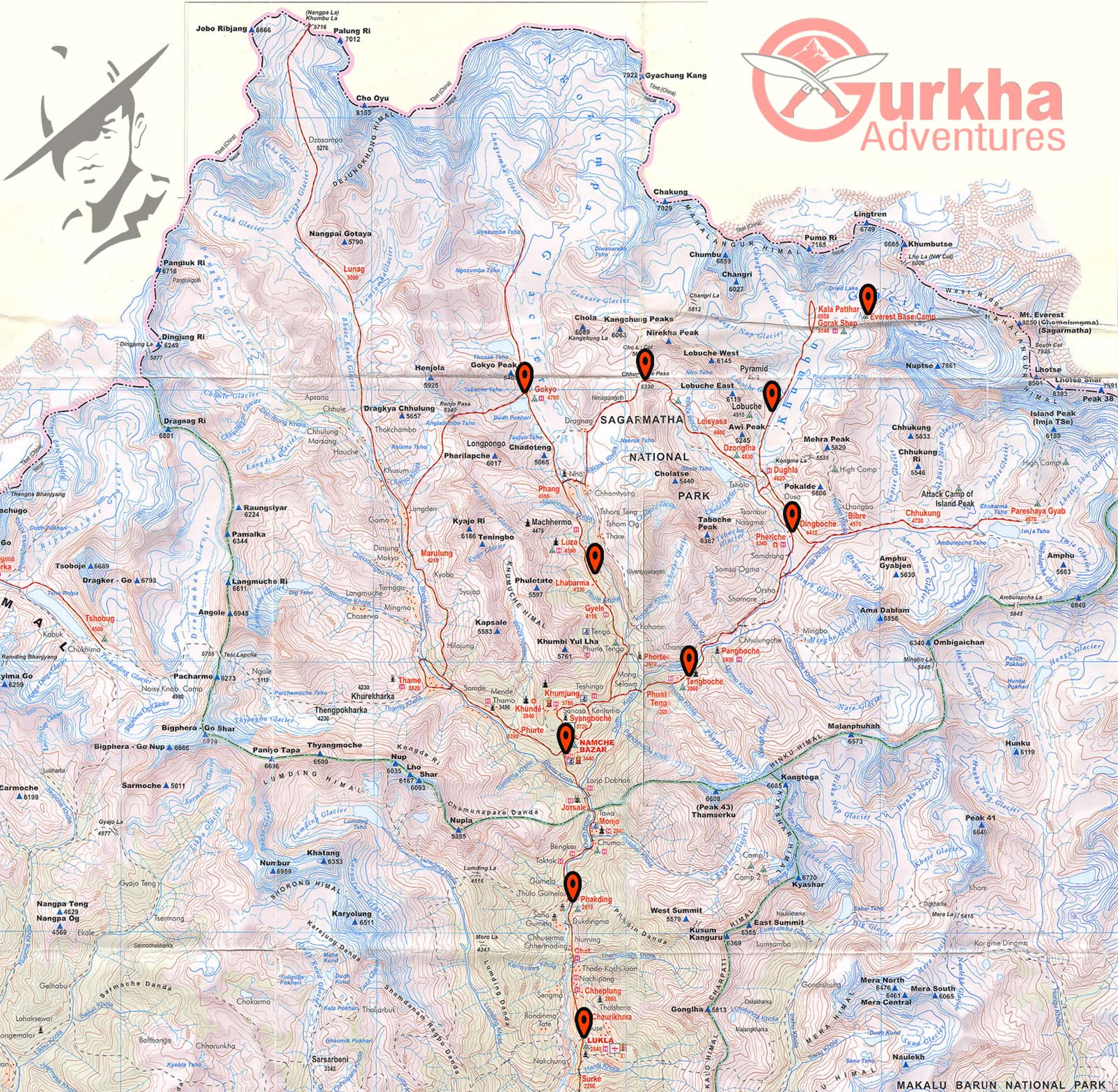Gokyo Ri Everest Base Camp Trek
15 Days
5554M

Hard
The Gokyo Ri Everest Base Camp Trek is a spectacular and challenging adventure that takes you through the breathtaking landscapes of the Everest region in Nepal. It combines the beauty of the Gokyo Lakes with the grandeur of the Everest Base Camp, offering an unforgettable journey for avid trekkers and nature enthusiasts.The trek begins with a scenic flight from Kathmandu to Lukla, a small town nestled in the heart of the Khumbu region. From Lukla, the trail gradually ascends through picturesque Sherpa villages, lush forests, and tranquil rivers, providing glimpses of the rich cultural heritage and traditional way of life of the Sherpa people.
As you make your way towards Gokyo, the trail offers stunning views of towering peaks, including Cho Oyu, the sixth highest mountain in the world. Gokyo is a remote settlement situated at an altitude of 4,790 meters (15,715 feet), surrounded by turquoise glacial lakes. The mesmerizing beauty of these lakes, especially the Gokyo Lake, adds a surreal touch to the trek, making it a photographer's paradise.
From Gokyo, you will ascend Gokyo Ri, a small peak rising to an elevation of 5,357 meters (17,575 feet). The panoramic view from the summit is simply awe-inspiring, with the mighty Everest (8,848 meters/29,029 feet) dominating the skyline. You'll be treated to a 360-degree panorama of other Himalayan giants, such as Lhotse, Makalu, and Cho Oyu, as well as the vast Ngozumpa Glacier, the longest glacier in the Himalayas.
After the exhilarating experience of Gokyo Ri, the trail descends back to the main Everest Base Camp trail. You'll pass through the famous Khumbu Icefall, an otherworldly maze of towering ice seracs, before reaching Everest Base Camp. This is the staging area for mountaineers attempting to conquer the world's highest peak. Standing at the base of Everest, you'll feel a sense of awe and accomplishment, surrounded by an atmosphere of mountaineering history and triumph.Throughout the trek, you'll have the opportunity to visit traditional Sherpa villages, monasteries, and prayer flags that are symbolic of the region's deep-rooted Buddhist culture. The warm hospitality of the Sherpa people, their colorful festivals, and traditional cuisine will enhance your cultural experience along the way.
The Gokyo Ri Everest Base Camp Trek is considered a challenging trek that requires a good level of physical fitness and acclimatization. The journey takes approximately 14 to 18 days, depending on the specific itinerary and the pace of the trekker. It is recommended to undertake this trek with an experienced guide or a reputable trekking agency to ensure safety and a smooth experience.
Overall, the Gokyo Ri Everest Base Camp Trek promises an extraordinary adventure filled with natural beauty, cultural richness, and a sense of accomplishment as you stand in the shadow of the world's highest peak. It is an opportunity to witness the magnificence of the Everest region and create memories that will last a lifetime.
Includes and excludes :
Includes:
- All meals as specified for trek (breakfast, lunch, dinner with tea/coffee).
- Arrival pick up & departure.
- All internal local transport as per the itinerary.
- Internal flights
- All trekking arrangements including trekking permits, climbing permits, National Park entrance fees.
- Accommodation in twin sharing local lodges or best available places for accommodation,
- Trekking & Climbing leader & porter (salary, insurance, food, accommodation & other allowances).
- Basic first aid kit is carried by your leader.
- All hard ware gears
Excludes:
- Kathmandu food lunch & dinner,
- International flights to Kathmandu,
- Tips for Porter, guide & other
- Personal climbing gears and climbing boot, clothing & equipment
- Personal expenditure, all bar bills, laundry, telephone calls, hot shower in the mountain region, mineral water, snacks, desserts.
- Medical examination (if required) & vaccination costs
- Optional trips. Charges incurred as a result of delays beyond our control
- Visa fees & Travel insurance. Airport taxes
- Meals or drinks except the 3 main meals specified in itinerary
- Anything else not specified in the ‘included costs’ section above
For more details
Itinerary breakdown
Gokyo Ri Everest Base Camp Trek
Day 1 Kathmandu 1360m to Lukla and to Phakding
Day 2 Trek to Namche Bazar – 5-6 hrs trek
Day 3 Acclimatise at Namche
Day 4 Trek to Phortse Tenga at 3680m – 5-6 hrs
Day 5 Trek to Dole at 4110m – approx 5 hrs
Day 6 Trek to Machhermo at 4470m – 4-5 hrDay 7 Trek to Gokyo at 4790m – 5-6 hrs
Day 8 Trek to Tragnak [4690m] – 6-7 hrs
Day 9 Trek from Cho La to Dzongla – 5-6 hrs
Day 10 Lobuche 4967m – 4-5 hrs
Day 11 Trek to Gorakshep 5184m – 7-8 hrs
Day 12 Trek to Kalapathar (5545m) and return to Lobuche (4940m) – 8-9 hrsDay
Day 13: Trek to Namche at 2835m
Day 14: Trek to Lukla at 2840m
Day 15: Lukla to Kathmandu by air 1350m





